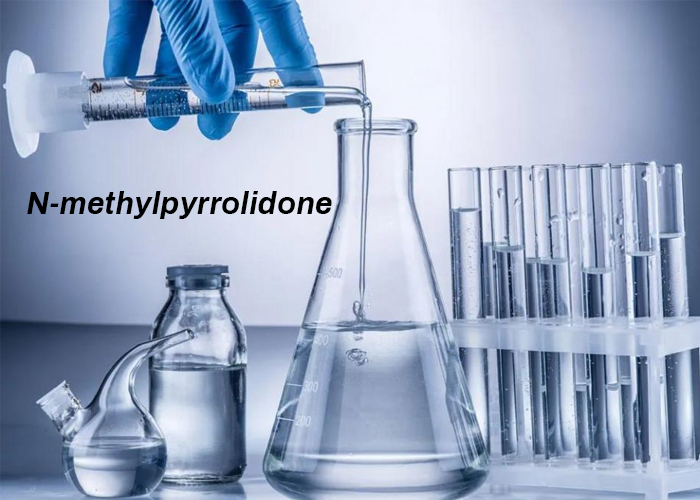Lithium battery positive electrode structure---N-methylpyrrolidone
In the vast lithium battery industry, NMP, despite its seemingly low profile, plays a crucial role, often called the "unsung hero" of lithium battery materials. (Required for electrode slurry production) |
I. The Mystery of NMP
(I) Origin and Essence: NMP, chemically known as N-methylpyrrolidone, consists of a pyrrolidone ring and a methyl substituent. N-methylpyrrolidone, NMP is a colorless, transparent, or slightly yellowish oily liquid with a barely perceptible amine-like odor. Its melting point is -24°C, meaning it remains liquid at room temperature, making it easy to store, transport, and use in various industrial processes.
NMP's relatively small molecular weight gives it a high boiling point of 202°C. This property allows NMP to remain stable even at high temperatures and resist volatility, paving the way for its application in high-temperature processes such as lithium battery production. 1-methyl-2-oxo-pyrrolidine NMP also has a low viscosity, which allows it to flow well in solution and mix quickly with other substances. In terms of solubility, NMP is a "universal solvent." It is miscible with nearly all common organic solvents, including water, alcohols, ethers, esters, ketones, halogenated hydrocarbons, and aromatic hydrocarbons. This broad solubility makes 1-methyl-2-oxo-pyrrolidine NMP valuable in various chemical reactions and industrial production. Furthermore, 1-methyl-2-oxo-pyrrolidine NMP can dissolve many inorganic metal salts, such as cobalt chloride and ammonium chloride, further expanding its application areas. In terms of chemical stability, NMP exhibits excellent stability in neutral solutions and is resistant to chemical reactions. However, in strong acidic and alkaline environments, NMP gradually undergoes hydrolysis.
(II) Performance "Superpowers"
NMP's exceptional solubility is particularly evident in its ability to dissolve polyvinylidene fluoride (PVDF), a crucial material in lithium battery production. PVDF is a polymeric solid powder that must be dissolved before it can be evenly mixed with other materials during the lithium battery electrode production process. NMP rapidly dissolves PVDF, forming a uniform solution that provides an excellent foundation for subsequent processes such as electrode coating. This powerful dissolving ability makes NMP stand out among many organic solvents, making it an indispensable key material in lithium battery production.
High Boiling Point
N-methylpyrrolidone NMP has a boiling point of 202°C. During the drying process after coating lithium battery electrodes, the solvent must be evaporated to form a stable electrode structure. NMP's high boiling point prevents premature evaporation during the drying process, allowing it to remain stable in the slurry and evaporate gradually and evenly as the temperature rises, resulting in a more uniform and dense electrode coating. Compared to some lower-boiling-point solvents, NMP can better control its evaporation rate during the drying process, avoiding coating defects such as pores and cracks caused by rapid solvent evaporation.
N-methylpyrrolidone NMP has excellent chemical and thermal stability. Lithium battery production involves various chemical reactions and varying temperature environments. N-methylpyrrolidone NMP maintains its chemical structure in these complex conditions and does not react adversely with other materials. In high-temperature environments, N-methylpyrrolidone NMP will not decompose to produce harmful gases, nor will it react chemically with electrode materials, thus ensuring the performance and safety of lithium batteries.
